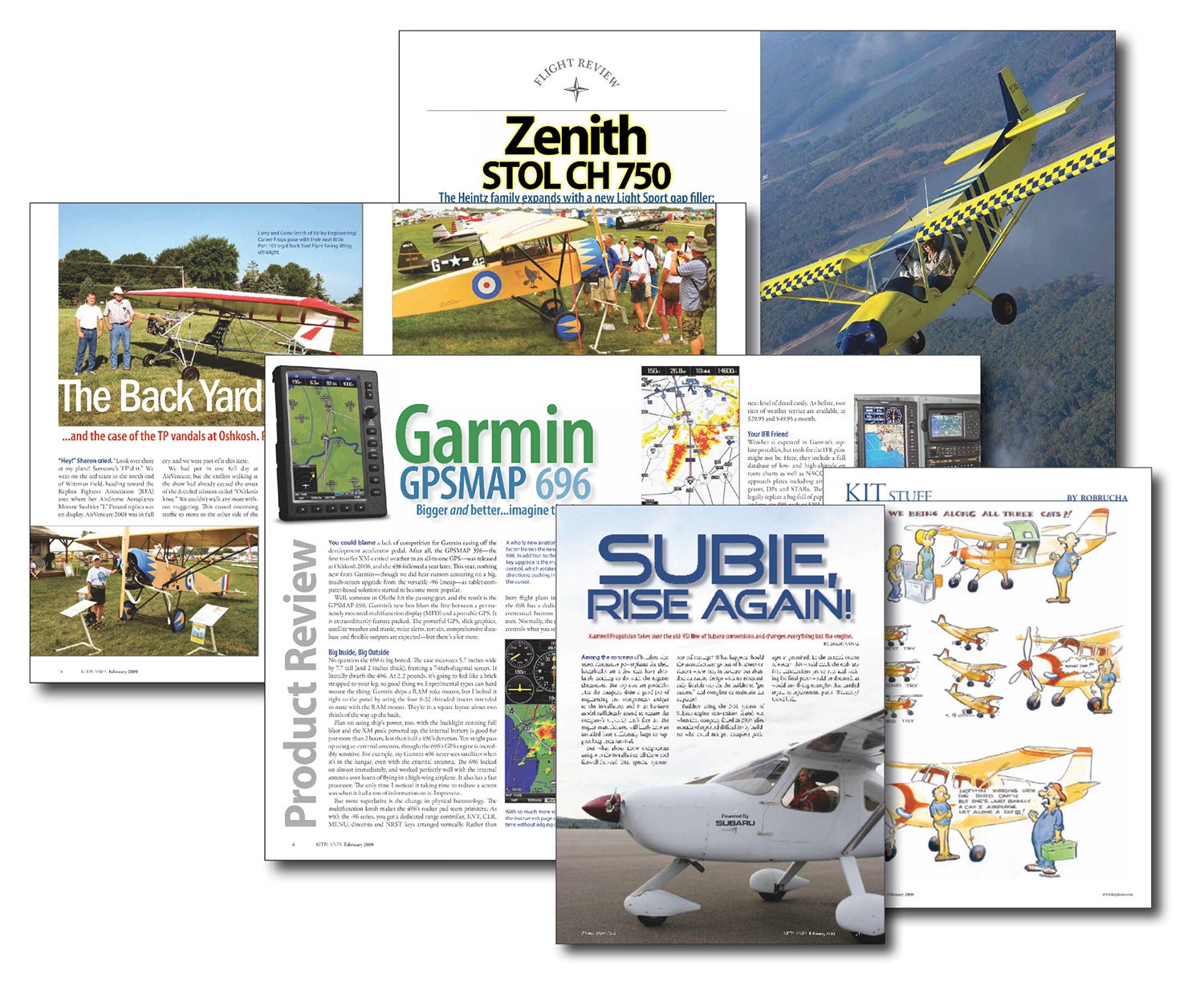 Our February 2009 issue was assembled near the end of 2008 and had yet to reflect the mayhem ahead for the U.S. economy. In fact, your current editor in chief, who was in that role then, opined that the aviation industry was showing a bit of optimism. In retrospect, the industry had seen the first shocks of what would be called The Great Recession but hadn’t fully predicted the bottom, which would happen in 2009.
Our February 2009 issue was assembled near the end of 2008 and had yet to reflect the mayhem ahead for the U.S. economy. In fact, your current editor in chief, who was in that role then, opined that the aviation industry was showing a bit of optimism. In retrospect, the industry had seen the first shocks of what would be called The Great Recession but hadn’t fully predicted the bottom, which would happen in 2009.
Nevertheless, we continued on our merry way with the new Zenith CH 750 on the cover in bright yellow and blue. Author LeRoy Cook visited with the Zenith crew and reported that “the Zenith STOL CH 701 has always been a fun little kit airplane, with a loyal following and the potential for continued longevity. But the Light Sport Aircraft standards allow much more to be gained by a little modernizing of the CH 701 basic design, so that individuals operating as sport pilots can take full advantage of its capabilities. That’s why Zenith Aircraft brought out the STOL CH 750 sport-utility kit airplane, which at first glance could be taken for a customized CH 701, or perhaps a shortened CH 801, its four-place cousin. However, the CH 750 represents designer Chris Heintz’ fresh look at a two-seat backyard flier, this time optimized to take full advantage of the 1320-pound LSA weight limit and even larger engines than those typically used in the LSA-type airplanes.”
Dick Starks reported on the ultra-minimalist Back Yard Flyer. “When we first saw the plane, Gene and Larry Smith of Valley Engineering were pulling it out of a long trailer. We thought that they had just arrived at Oshkosh and were getting ready to set it up for flying. In a way, that is exactly what they were doing. Three minutes later the plane was ready to go! Gene and Larry have developed a swing-wing concept that has to be seen to be believed. The wing rotates 90° on its vertical axis. After rotation, it takes about 2 minutes to attach the aileron linkage, bolt the wing in place with four wing attach bolts and you’re ready to aviate. We were amazed. It got to be almost comical seeing the expressions on people’s faces as Gene and Larry would roll the plane up to the flight line in its ‘stored’ configuration and then in the blink of an eye have it transformed into a plane ready to fly.”

Elsewhere in the issue, we covered the new Maxwell Subaru conversion of the EJ25 engine that was flying in a GlaStar. Its roots were in the NSI program, as we reported. “Dr. John and Gwen Maxwell didn’t intend to get into the alternative engine business but, as the landlords of the old NSI facility, they found themselves with the assets of the company in place of the rent. Rather than let the concern die and the existing customers twist in the wind, the Maxwells started the long task of learning everything they needed to know about the industry and the product the previous company had been selling. It was, they now say, an eye-opening affair.” And while the Maxwells attempted to improve upon the NSI promise, the final FWF cost wound up near a conventional Lycoming’s.
A review of Garmin’s then-new GPSMAP 696 in this issue highlighted the big-screen GPS’s features, pointing out that it blurred the lines between portable GPS and “permanently mounted multifunction display.” Indeed it did, as the basic format would go on to underpin the first G3X Experimental-class EFIS from Garmin. Call it a trial balloon with a 7-inch display and the ability to grab satellite weather. We mounted it on the panel of the boss’s Sportsman, eerily predicting a full dual-screen G3X suite that would be installed a few years later.
Also in this issue, we continued to embrace the still-new LSA category, with stories on Bob Fritz building his LSA-qualified Jabiru, Dave Martin flying the Remos GX and another installment of the Ken Krueger/Ken Scott one-off called the KK-1. Will we be doing much the same when MOSAIC comes to pass? You betcha.













